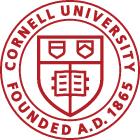The Applied Physics program combines a core physics curriculum with research and study in areas that also includes the application of physics to the broader scientific and engineering communities. Students in applied physics may pursue research in any one of several broad areas, including nanoscience, advanced materials, condensed matter physics, renewable energy, quantum information and photonics, biological physics, astrophysics and plasma physics. The Ph.D. program in the graduate field of Applied Physics (AP) is a flexible, research-oriented doctoral program tailored to individual interests. AP combines a core physics curriculum with research and study usually in one of the areas discussed above. Graduate students can engage in a wide range of cross-disciplinary research activities, bringing their expertise as an applied physicist to bear, often in a collaborative environment. Instead of a qualifying exam, students are expected take classes in a common core of physics subjects, being quantum mechanics, electrodynamics, statistical mechanics, and advanced laboratory techniques.
The Ph.D. program in the graduate field of Applied Physics is a research-oriented doctoral program tailored to individual interests. The program combines a core physics curriculum with research and study in one of several areas that deal either with the application of physics to a technical discipline or with the interface between physics and another area of science. Students who have majored in physics, in another physical science (for example, chemistry), or in an engineering field are eligible for the program.
Research topics in this diverse area range from innovative studies of the basic properties of condensed-matter systems to the nanofabrication and study of advanced electronic, optoelectronic, spintronic, and quantum-superconductor devices. Condensed Matter Physics includes solid-state physics and the study of liquids and soft materials. As the largest field within physics, it includes a wide range of topics such as semiconductors, metals, magnets, superconductors, polymers, and biological systems.





